
THE FORT
The Dhar fort was built in the 14th century during the reign of Mohammad Tughlaq (1325-51) With strongly built massive sandstone walls, cars reach right up to the top and the fort presents a breath-taking view of the city.

BHOJSHALA
Bhojshala means Raja Bhoj’s school. Originally on this site was a temple of the XIand XII century. A mosque was built out of the remains of the temple, which along with Kamal Maula and Lat Masjid, represent the first phase of the patronization of architecture by the Malwa sultans, before Mandu.
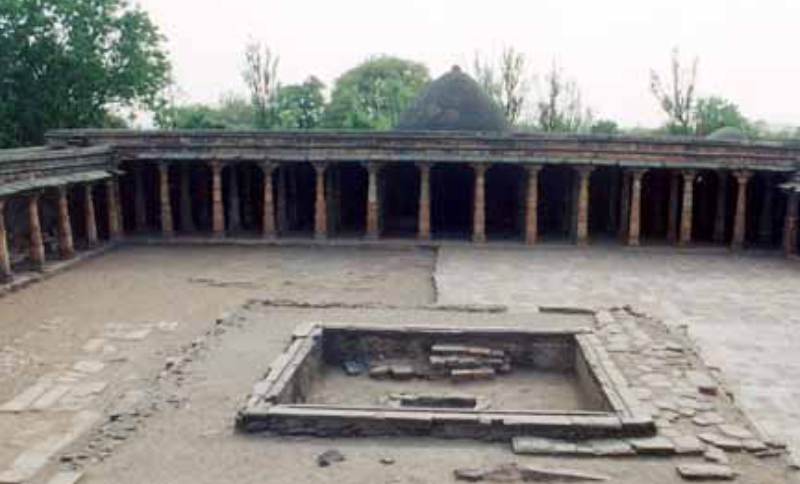
KAMAL MAULA’S CEMETERY
Kamal Maula was a famous saint who settled in Dhar in the 1200s. The Sultans of Malwa rebuilt his tomb and the surrounding complex in the 1400s. The Persian inscription over the gate records the work. The living descendants of Kamal Maula have served as custodians of the shrine for almost 800 years. It is a small enclosure near the gate of Bhojshala, having four tombs.

LAT MASJID
Lat Masjid is a mosque named after the Iron pillar of Dhar (called “lāc” in Hindi). It is also known as the Latki masjid. The mosque was built in 1405 CE by Dilawar Khan, the first Sultan of Malwa. The decorative sculptures and other stones, quarried cut, from the Hindu and Jain temples, technically called Spolia, were carried away for use in the construction of this particular place of worship.
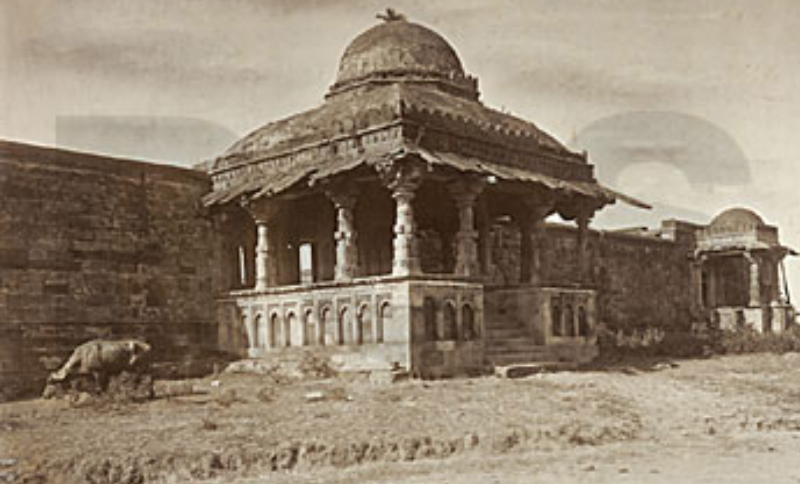
CHHATRIS (CENOTAPHS)
On the Ahmedabad road is an enclosure of a group of Chhatris, which is an elevated, dome-shaped pavilion, of the former rulers of the princely state of Dhar. These Cenotaphs are a fine example of the architecture of that period, established by the royal families of thiserst-while kingdom.
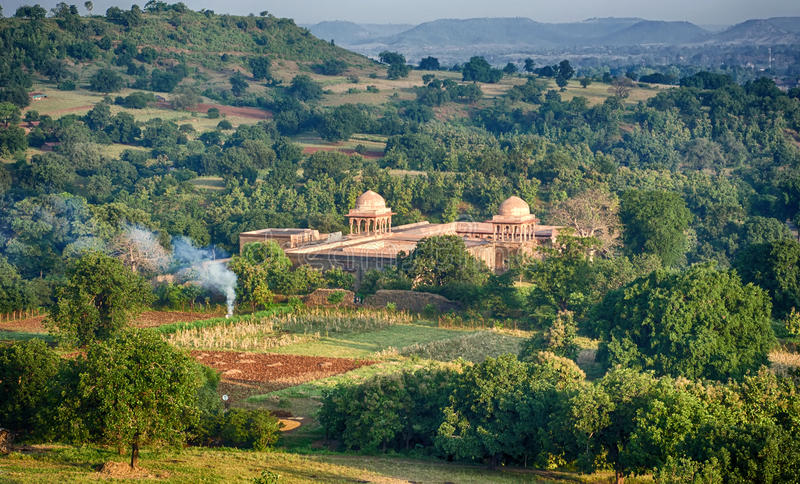
MANDU- CITY OF JOY
Situated about 30 km away from Jhira Bagh Palace, the city of Mandu is endowed with very attractive natural scenery, most visually stimulating during the rainy season. It is clothed in green with several brooks and torrents, rushing down into the ravine winding about its sides below. The beauty is enhanced by about a dozen lakes and ponds interspersed on its top. This is probably the reason why the city, enclosed within its fort-walls, was christened by the Muslim rulers as Shadibad, ‘The City of Joy’, at the pinnacle of its glory.
The monuments of Mandu, withstanding the test of time and centuries of evolution, time- are the representative specimen of the Malwa style of Indo-Islamic architecture. Moreover, harboring the pristine love story of Rupmati and BazBahadur, Mandu is veritably a place of romance and beauty.
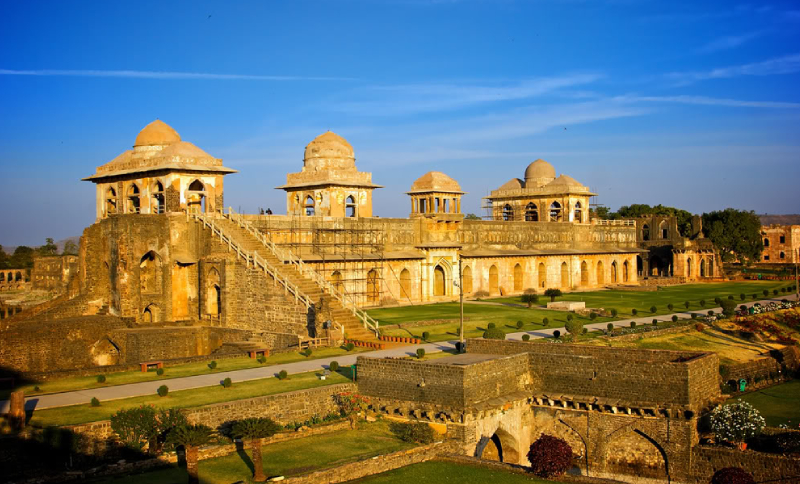
JAHAZ MAHAL
It reflects upon the spirit of Mandu’s bewitching beauty. It is artistically built on the narrow strip of land between the waters of the Munja Talao and the Kapur tank, such that it presents the sight of a ship anchored in between them. The best view of this building can be seen from the uppermost terrace of the Taveli Mahal, which houses a museum now. It is best marveled at in monsoon when both the tanks are full of water and the nature around is astoundingly green with vegetation. The effect is the most charming in the (why?) serene quietude of the clear moonlight against which the silhouette of the building, with the tiny domes and turrets of the pavilions gracefully perched on the terrace, presents a most delightful spectacle.
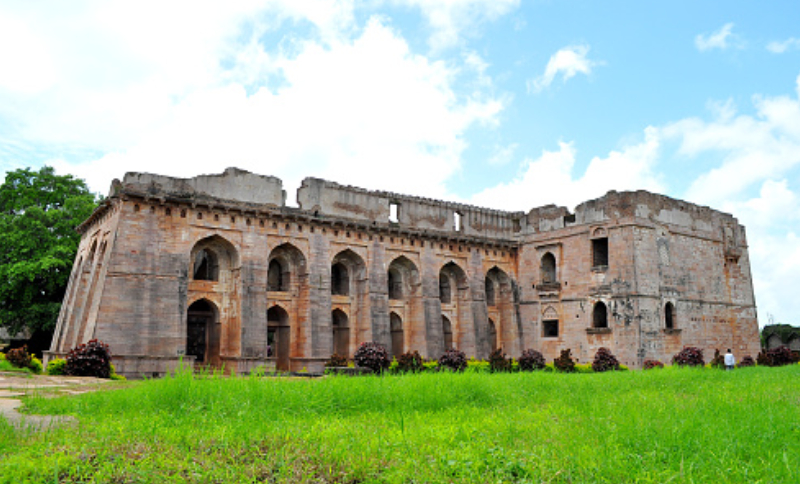
HINDOLA MAHAL
It means a ‘swinging palace’, a name given to it because of its peculiarly sloping side walls. The plan of the building is “T”-shaped, with a main hall and a transverse projection at the north. On both sides of the hall, there are six arched openings, above which there are also windows filled with beautiful tracery work for admitting light and air inside. Architecturally, it marks itself distinctly from other palaces of Mandu by the extreme simplicity of its style of construction, all the while possessing a definite aesthetic appeal.

DILAWAR KHAN’S MOSQUE
This is the earliest Indo-Islamic building at Mandu, as is clear from an inscription datable to 1405 AD referring to the reign of the first Muslim king of Malwa. It was meant for the members of the royal family. Its plan consists of a central courtyard enclosed by a colonnade. The pillars and ceiling inside are in a typical, symmetrical Hindu style.
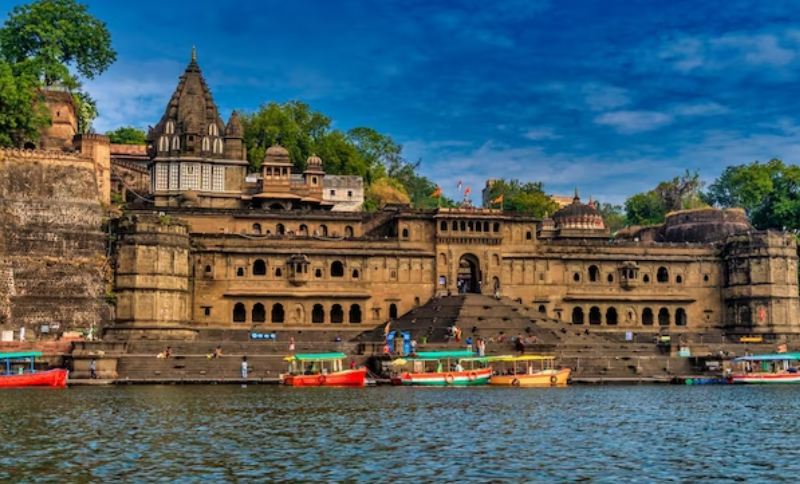
MAHESHWAR- ALONG THE NARMADA
70 km from Jhira Bagh Palace, an ancient city that is still flourishing, Maheshwar was, at one time, the capital of the Holkars. Located on the northern bank of the sacred river Narmada, Maheshwar has one of the most beautiful Ghats anywhere in the country. An age-old center of weaving, the Maheshwari saris are famous all over the world.
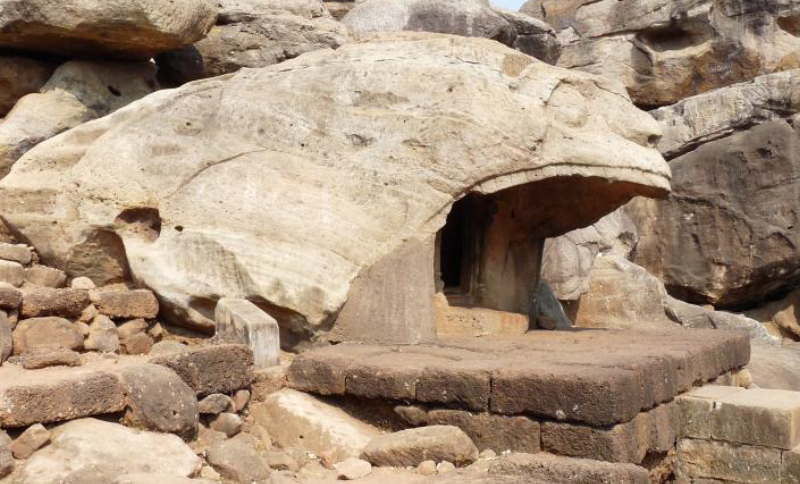
BAGH CAVES- ARTISTIC ADVENTURES
The Bagh Caves are a group of nine rock-cut monuments, situated among the southern slopes of the Vindhyas in the Bagh town of Dhar, located at a distance of 97 km from the town. These are renowned for mural paintings by master painters of ancient India. The Bagh caves, like those at Ajanta, were excavated by master craftsmen on perpendicular sandstone on the far bank of the seasonal stream, the Baagani. Buddhist in inspiration, of the nine caves, only five have survived. All of them are ‘viharas’ or the resting places of monks’ monasteries boasting of a quadrangular plan. A small chamber, usually at the back, forms the ‘chaitya’, the prayer hall. The most significant of these five extant caves is Cave 4, commonly known as the Rang Mahal (Palace of Colors). These caves were dug out by Savannah. These were quarried in the 5th -6th century AD.
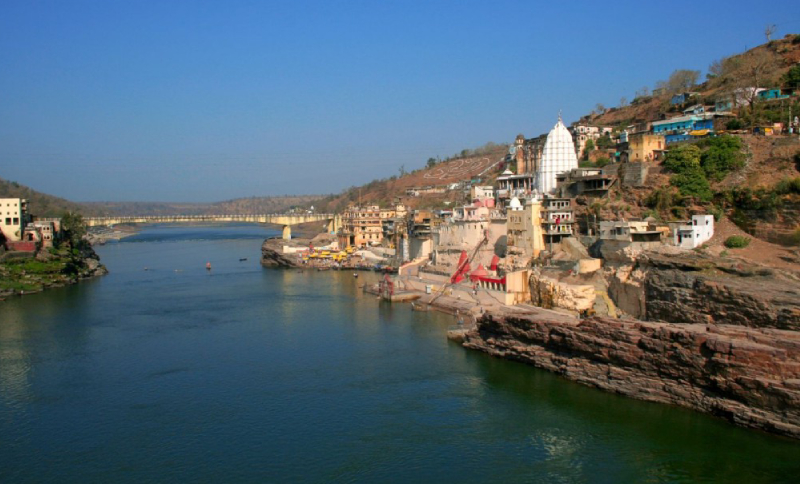
OMKARESHWAR- ARCHITECTURAL DELIGHT
130 km from Jhira Bagh Palace, at the confluence of the Narmada and Kaveri rivers, Omkareshwar is an island shaped like the holy symbol of OM. Thousands of pilgrims gather at this holy city to offer prayers to the Jyotirlinga(Jyoti means “radiance” and lingam is “the image or sign” of shiva. It is one of the twelve radiant signs of the almighty shiva throughout India), at the Shiva temple of Shri Omkar Mandhata. The Jyotirlingam and the shape of the island together heighten the religious importance of this holy soil for devout Hindus.
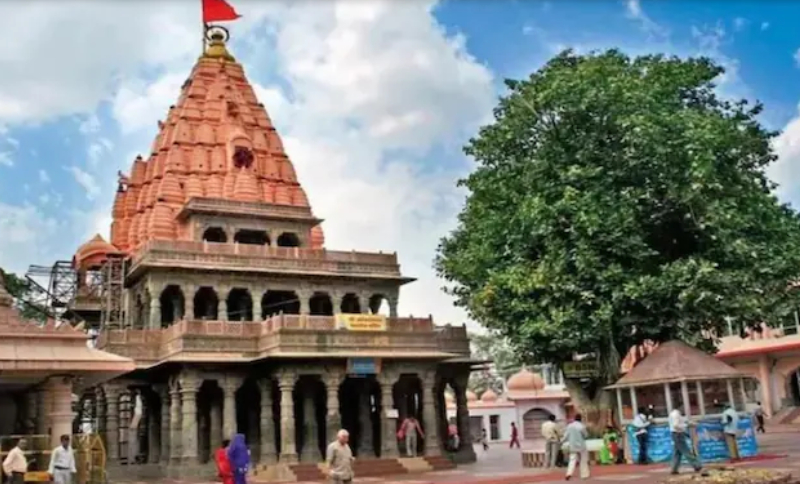
UJJAIN- SPIRITUAL ABODE
An ancient city situated on the eastern bank of the Kshipra River, Ujjain was the most prominent city on the Malwa plateau of central India for much of its history. It emerged as the political center of central India around 600 BCE. It was the capital of the ancient Avanti kingdom, one of the sixteen mahajanapadas or Ujjain continues to be an important place of pilgrimage for Shaivites( devotees of Lord Shiva), Vaishnavites (devotees of lord Vishnu) and followers of Shakta. It is also the site for the triennial KumbhMela.
